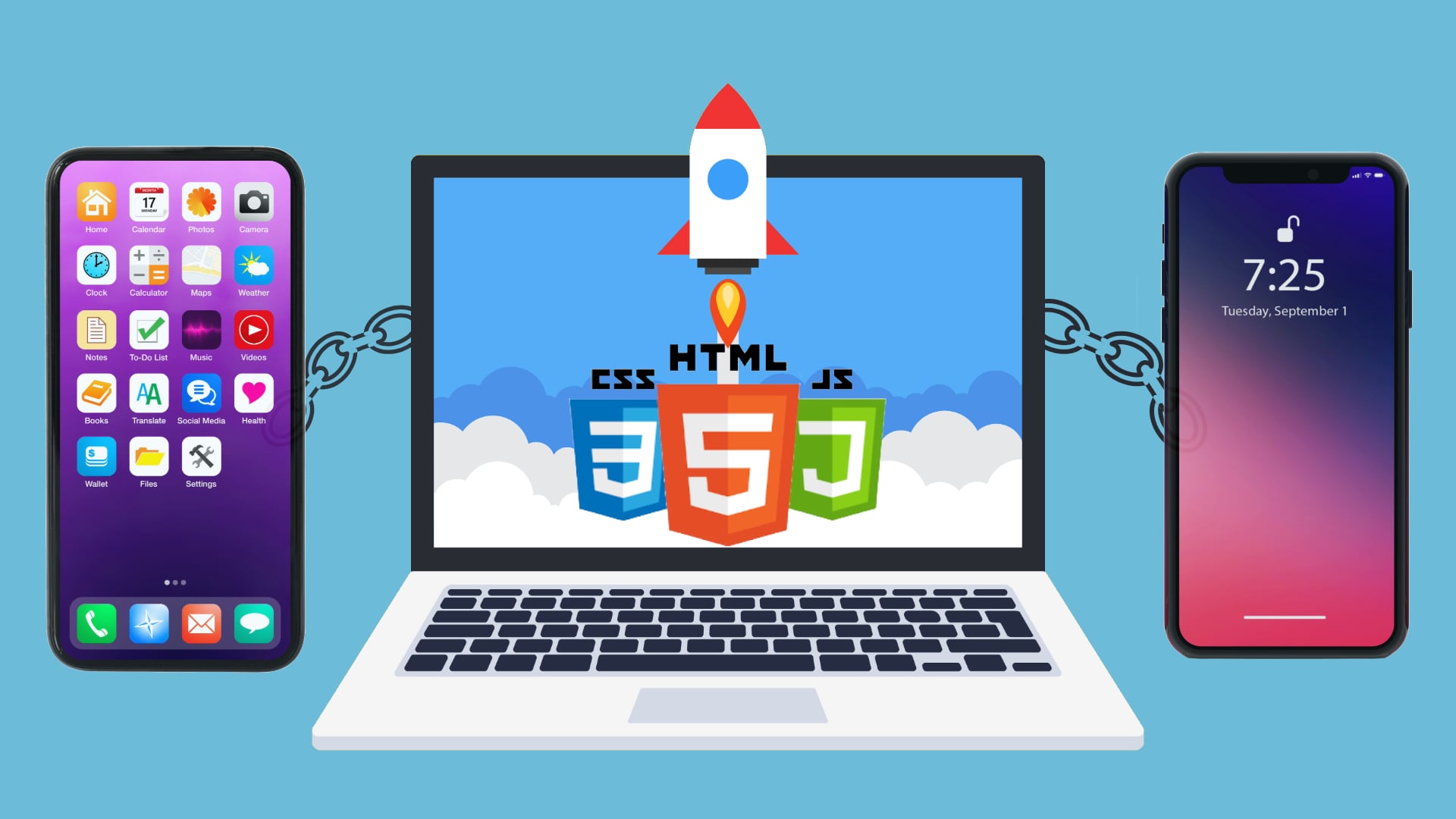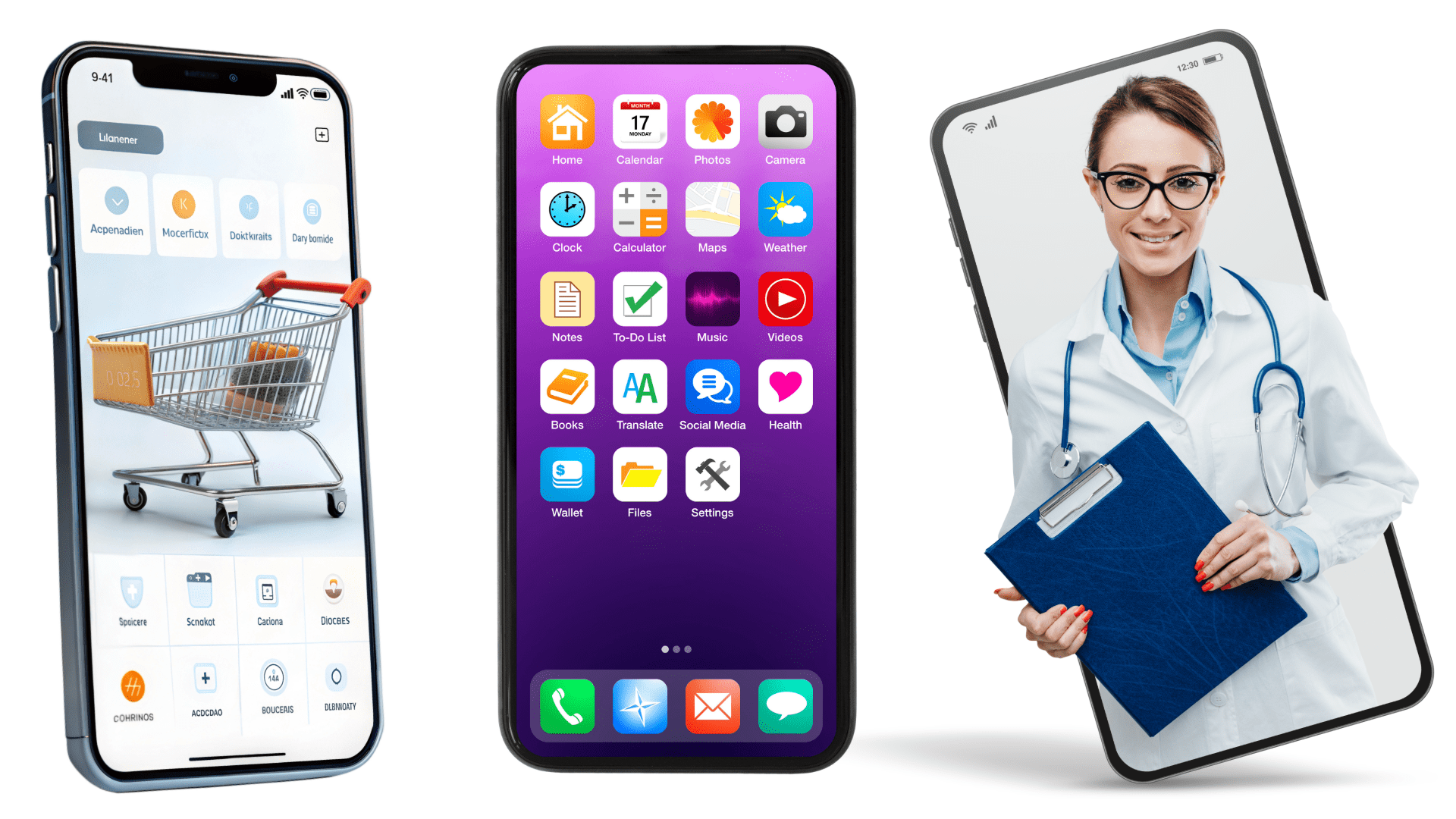Food Delivery App Development: Cost, Stacks, and Features
Technology is rapidly evolving at a very fast rate and industries are trying their best to keep up with the latest trends. IT industry is using the latest technology to develop cutting-edge innovations to help the food delivery industry reach new heights. Next Olive Technologies is the leading Food Delivery App Development Company that is revolutionizing the restaurant and food industry with its state-of-the-art Food Delivery App Development Services. Food Delivery applications have made the lives of people much easier in the context of ordering healthy food from their favorite restaurants. Just imagine a food item from your favorite restaurant or outlet being delivered to your home within minutes. In this technologically advanced world, technology is evolving and transforming the food delivery industry by bringing a digital realm to the business. In this guide, we will discover the secrets to creating a food app for your business needs.
Table of Contents
Toggle
Food Delivery Industry Status in 2024
As of 2024 According to McKinsey & Company, the food delivery industry is rapidly growing after the Covid-19 pandemic. During the pandemic, food delivery apps saw a significant rise in popularity among users. Companies like Zomato, Swiggy, and Ubereats saw a huge rise in users on their platforms. People were able to order the food online at the safety of their homes. Food delivery companies were using the best safety practices to deliver the food by following the safety protocols. Many new startups were investing heavily in app development.
Now in 2024, the industry has evolved to a great valuation. As of 2023, the food delivery industry had a market valuation of $99.1Bn and is estimated to be doubled in 2030 and a 16.8% YoY change. Nearly 1.5 Billion users were using the applications majorly contributing from Asian countries like India, China, and South East Asian countries.
Many companies such as DoorDash, Postmates, and Uber Eats are still making up to remain profitable in the industry, while several companies like Ubereats, etc are highly profitable in the USA.
Business Models of Food Delivery Applications
If you are thinking of launching your own food delivery application, you should be aware of these three main business models of the food delivery app industry. Being the prominent Food Delivery App Development Company in the USA, we offer App Development Services based on one of these three business models.
[1] Platform to Consumer Model (P2C)
This type of business model connects the customers directly with the service providers using a digital platform. This model uses sophisticated technology for the smooth-running of transactions and enhances the user experiences, which enables the customers to use products or services with more convenience and efficiency. Many famous food delivery service companies like Uber Eats and DoorDash use the P2C Model. This model is more profitable as the application can charge some fees from both the restaurant and the customer.
[2] Delivery Service Aggregators
This type of model enables the platform to act as a medium between the customer and various restaurants. If the customers face any issues regarding the orders or deliveries, the platforms offer customer services on behalf of the restaurants. The platforms charge some fees for this service from the restaurants on every successful transaction. Some famous companies such as GrubHub, JustEat, and Delivery Hero use this business model.
[3] Business to Consumer Model (B2C)
In the B2C model, the business serves its product or services directly to customers. The most notable examples of companies using this model are Domino, Pizza Hut, KFC, etc. Many companies like these have adopted online food delivery services directly through their own platform or collaborating with different service providers for their services. By leveraging the B2C model, platforms earn by charging some fixed amount from these companies on every successful transaction.
Different Types of Online Food Delivery Apps
There are various different kinds of food delivery applications. Being a prominent Food Delivery App Development Company, we offer different types of Food Delivery Apps to our clients.
[1] On-Demand Food Delivery App
On-demand food delivery apps are one of the most trending applications over the internet. As the name says, on-demand apps provide services to customers at their homes, whether it is food delivery or any other type of service. On-demand food delivery apps enable various restaurants to offer their food service to customers directly through the platform. Customers can select the restaurant and the food item and place an order. Then the restaurant will prepare the order and hand it over to the delivery partner of the platform. The platforms generate revenue by charging a fixed amount from the restaurants and the customers.
[2] Food Truck Delivery App
Food trucks are becoming common nowadays and they are offering various unique dishes and food items to the customers. Every food truck is unique and this is the major factor that differentiates each truck from one another. But not to be confused with their size. Food trucks often provide restaurant-level services and some even provide proper sitting arrangements and digital menus for their customers. We as the top-end Food Delivery App provide custom food truck delivery applications with unique features and diverse menu options.
[3] Restaurant Delivery App
Nowadays, many restaurants invest heavily in restaurant delivery app development to offer unique food services to the customers online. Just like food trucks, restaurants are also unique and offer best-in-class services ranging from food serving to a unique ambient atmosphere for customers to enjoy their food. Due to technological advancements, many restaurant businesses are requesting the latest features and tools in their unique application so that their customers get an engaging user interface and best-in-class user experience while using the app. As a Food Delivery Application Development Company, we offer the latest restaurant app development solution to our clients.
Features and Panels to Consider in a Food Delivery App
Every food delivery application consists of several panels that serve different purposes. Each panel offers unique tools and features for the respective person to use ranging from customer to business owner. Most of the food delivery applications offer three to four unique panels. Being a Food Delivery App Development Service provider company, we ensure each application is unique in its features and has a simple-to-use interface.
[1] Customer Panel
The customer panel is the most widely used aspect of a food delivery app. The customer panel is the main interface that allows the user to place an order of their food from their favorite restaurant. Users can select a delivery location and mode of payment while placing an order. Apart from these features, the customer panel also has several other unique features which enhance the user experience greatly.
[I] Social Media Login
Many users are on several social media platforms like Facebook, Instagram, X (Formerly Twitter), etc. Through the social media connectivity feature, customers can easily connect the food delivery application to social media and get the latest news and trends related to restaurants and food items.
[II] Push Notifications
Nothing is more frustrating than missing the important updates of menus and offers of the restaurants. This is why the push notification feature helps users to stay updated on the latest offers and discounts that the app or restaurant offer.
[IV] Place or Cancel Orders
Users can easily place their orders through a single click along with the delivery address and mode of payment. But sometimes some things might get changed. So the customer can also cancel their order due to any reason through a single click.
[V] Payment Options
A good food delivery application always contains multiple modes of payment. Users have an option to choose from the available payment methods such as COD, debit card, credit card, PayPal, etc. The payment gateway is end-to-end encrypted to ensure safe transactions.
[VI] Order Tracking
A live order tracking system helps customers to easily track their food orders. The order tracking system tracks the location and status of the delivery partner and informs the user in an infographic form. It also tells the estimated time to reach the destination or whether the order is dispatched from the restaurant or not.
[2] Driver Panel
The driver panel enables the delivery partner to track and manage his orders. The panel has several dedicated tools and features to help the driver such as managing the orders, delivery address location, and more.
[I] Profile Creation and Management
This feature allows the driver to create his profile, which consists of his name, age, contact number, company-issued ID number, and profile picture. Profile management feature helps the user to manage and edit his profile such as editing profile picture, contact number, etc.
[II] Order Manangement
The delivery partner always has various lists of orders for delivery. The user can also manage the list of delivered orders and the orders waiting to be delivered. Drivers receive orders through this panel in the app and manage the deliveries.
[III] Earning Maagement System
The driver can view and manage his earnings through the panel. Every time an order is delivered, he earns monetary incentives directly into his profile in the app. The user can later transfer his earnings to his bank account.
[IV] Delivery Information
The user can get information on the delivery address such as the customer’s name, contact number, and location of the delivery address.
[V] Navigation System
The navigation system saves the delivery partner’s time greatly by guiding him turn-by-turn to the location of the delivery address easily.
[VI] Calling/Chat Feature
This feature allows the delivery person to communicate with the customer if he needs information about the delivery address.
[3] Restaurant Panel
The restaurant panel is where the order information is seen by the restaurant staff who starts preparing the food item mentioned. It also enables restaurant management to effectively manage various processes such as menu management, applying promotions and offers, etc.
[I] Dashboard and Profile Management
The restaurant manager can set up their account after redirecting their home page. After that, the restaurant can manage and track the completed orders, pending orders, etc.
[II] Menu Management
This feature allows the restaurant to manage, edit, customize, or create a new menu if required.
[III] Promotions and Offers Management
Restaurants can apply for new promotions and offers on their food items or other services to attract more customers.
[IV] Push Notifications
Push Notifications alert the restaurant of new orders and the status of current orders whether they are delivered or not.
[4] Admin Panel
The admin panel plays an important role in managing the whole ecosystem of a restaurant. It can be managing the inventory, raw materials, other branches of the restaurant, view analytics, and more.
[I] Interactive Dashboard
An interactive dashboard helps to get an overview of registered restaurants, total revenue, orders, and delivery partners. It also gives a visualization of various important KIPs and user insights to help make further decisions if required.
[II] Branch Management
A restaurant can have multiple branches in a city. So the admin panel helps to manage them all effectively such as approving or rejecting listings, managing menu food items and pricing, etc.
[III] User Management
The admin can perform various user-related activities such as managing registered users, managing delivery partners, etc.
[IV] Revenue Management
The admin can track daily, weekly, or monthly revenue generation, manage the commission rates of delivery partners, manage financial records, transactions payment history, etc.
[V] Analytics and Reporting
The admin can view and create detailed reports on sales, user engagement, order volumes, and more. The in-built data visualization tools can help to create visuals to generate important insights for decision-making.
Food Delivery App Development Process
Food Delivery App development is a long and step-by-step process involving various stages from conceptualization to development and after-deployment support. As the foremost App Development Company, we use various development methodologies such as Agile, Waterfall, Incremental, Spiral, etc. Next Olive Technologies is the best Food Delivery App Development Service Provider in the USA. Let us see the basic application development process in detail.
[1] Conceptualization and Feasibility Analysis
This is the first stage of the app development process. Conceptualization is the process of identifying the purpose of the app project, its target audience, and the issues it is intended to solve. After this feasibility analysis is conducted to assess the project idea on various parameters such as:
- Economic: It includes assessing the revenue generation of the app, development costs, marketing, and maintenance costs.
- Operational: Assess whether the app idea fits into the operational model of the business or not and updates and customer support of the app after deployment.
- Legal: Identifying any legal issues that could affect the development of the app such as intellectual property rights and Play Store policies, etc.
- Time: Estimating the total time required to develop the application.
After the feasibility is done, it will be decided whether the idea is practical or not or if it needs any changes to proceed further.
[2] Requirement Gathering and Analysis
- This step involves gathering the requirements of the project from the stakeholders through multiple meetings and surveys. Developers also use focus groups to gather information and understand the goals and processes of the business. This will help them to ensure that the software meets the requirements of the business.
- After the requirements are gathered it is time to analyze them. Developers break down the requirements into smaller manageable tasks. Each task is analyzed in detail. Developers draft a detailed description of each requirement, which includes the features and functionalities as well as user requirements.
- Developers also decide the type of platform such as native apps, cross-platform apps, or hybrid apps based on the target audience and functionality and select the development methodology, languages, frameworks, timelines, milestones, etc.
[3] Designing and Wireframing
This step involves designing and simulating a prototype of the application. Basic sketches or wireframes are created to visualize the structure, design, and flow of the app. UI/UX of the app is also designed based on the requirements in this stage. After this, a prototype of the app is designed and simulated in a virtual environment to simulate user experience and get early feedback.
[4] Coding and Development
This is the main stage. The project is divided into frontend and backend and is further divided into several smaller, deliverable modules among the developers. The frontend consists of the UI/UI elements and user-side features of the application. The backend consists the server-side technologies such as databases, API integration, user authentication, cloud or local storage, security features such as encryption, user authentication, and data privacy features.
The frontend and backend are developed by the selected languages, frameworks APIs, etc.
[5] Testing and Quality Assurance
After the development is done, testing of the application begins. The testers perform functional and non-functional testing, performance testing, usability testing, compatibility testing, security testing, and beta testing on the application.
If any issue arises during the testing, the development team is notified and the problem is fixed.
[6] Deployment and Launch
In this stage, the app is ready to be launched. First, it is made sure the app meets the Play Store or App Store’s guidelines and policies. The app is submitted for review and once the review is approved the app is launched for public use. After the launching, marketing is done to promote the app in various social media and advertising channels.
[7] Post-Deployment Maintenance and Support
After the deployment, the app is continuously monitored for performance and user feedback to identify potential issues and bugs. Regular updates are provided which include security patches, new features, and improvements based on feedback and market trends.
Next Olive Technologies is the top-notch food delivery app development firm in the USA.
DoorDash uses the Platform To Customer (P2C) Model.
Yes, at Next Olive Technologies, we offer state-of-the-art custom food delivery application development.
Creating your own food ordering app is not an easy task and needs a dedicated development team. At Next Olive Technologies, we have experienced developers to turn your ideas into reality.
The cost of developing a food delivery app depends on several factors such as the type of app, functionality, and complexity. Generally, it costs around $40,000 to $700,000.
Yes, we can build an app like Zomato and also build an app like DoorDash.
Yes, we can make an Xamarin food delivery app.
At Next Olive Technologies, we can provide Swiggy clone app development, Zomato clone app development, and Ubereats clone app development.




